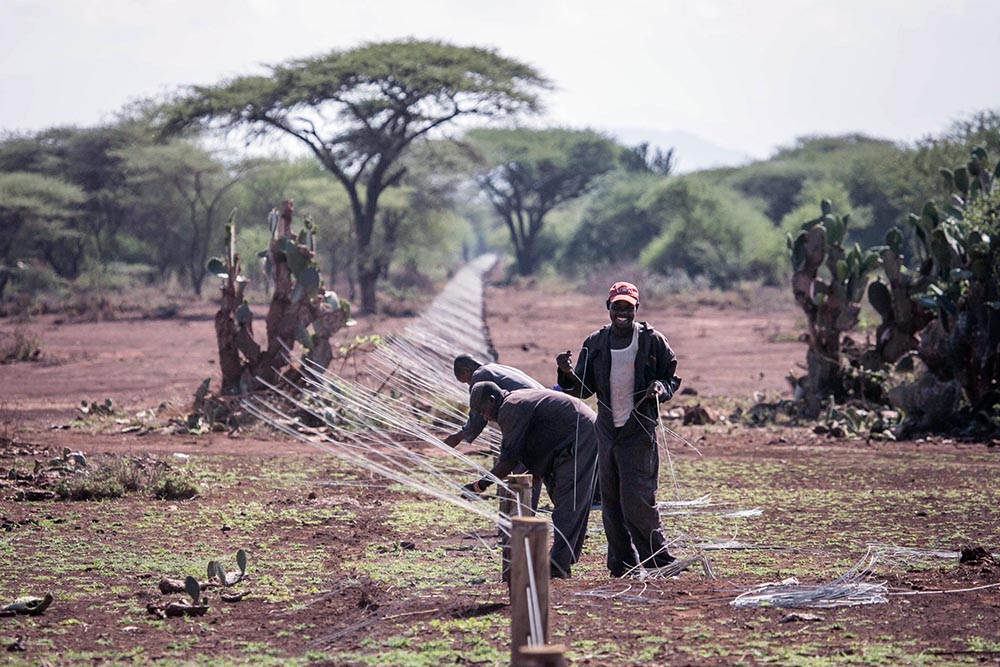Crop-Protecting Fences and Rapid Response Rangers

The Amboseli-Tsavo-Kilmanjaro ecosystem straddles Kenya and Tanzania; and protecting over 1.6 million acres of wilderness is no easy task. Just ask Big Life Foundation. The foundation believes that human-wildlife coexistence is so critical to its mission to protect this ecosystem that many of its programs are focused on the problem or issues related to it.
One of the ways the foundation works strategically to mitigate the issue is by building crop-protection fences to deter elephants from entering farmed areas in the first place. Since 2016, Big Life has been working with local communities and partners on an ambitious solution to crop-raiding in the areas with the most incidents: the construction of an electric fence that establishes a hard boundary between farmers’ crops and hungry elephants. To date, 100 kilometers (about 62 miles) of the needed 120 kilometers (about 74 miles) have been constructed. The impact is nothing short of extraordinary. There has been a 90 percent decrease in the number of elephant crop-raids in areas protected by the fence. Of equal importance, there are signs that public opinion toward elephants has improved.
Before the fence, only 22 percent of local community members said that they thought positively of elephants. Today, that figure has risen to 77 percent, with 97 percent of people believing that the crop-protecting fences have been effective at eliminating human-elephant conflict.
“I can’t remember the last time I harvested this much," said a local farmer adjacent to the fence. "The fence is a life-saver for farmers. In the past, we invested a lot of money to stop the raids, but our efforts were in vain. In hindsight, this fence is exactly what we've been looking for."
Of course, Big Life Foundation can't fence the entire ecosystem, so the organization has created rapid response ranger teams to chase elephants out of farms. Specially fitted for long periods in the bush without resupply, Big Life maintains an elite team of 24 full-time rangers who monitor elephant movements and work with the community to help control increasing conflicts and keep wildlife and people safe.
Read the full article on PaulAllen.com: Human-Wildlife Coexistence and the Future of Wildlife
